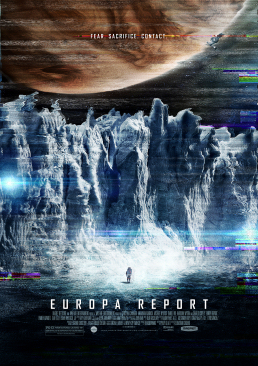
For starters, let me go on a mini-rant (this is something I do occasionally on Facebook, usually about grammar). Here goes: just FYI, I don’t use the Forrest J Ackerman-coined neologism, “sci-fi,” for the following reason: since that phrase was coined to resonate with “hi-fi” in the ‘50s, it has become, in the public mind, synonymous with EVERYTHING genre, whether horror, fantasy, comics, science fiction or whatever, and doesn’t really mean “science fiction,” if it really ever did. For something like twenty years, in a friendly fashion, Forry and I disagreed about this; every so often an envelope would arrive in my mailbox stuffed with news clippings and the like that “legitimized” the use of “sci-fi” in mainstream usage. But I maintained that in the public mind the phrase still characterized SF as cheap monster flicks of the ‘50s and the like. (Ironically, I now look back on those same movies with a genuine sense of nostalgia!) So I will continue to call the specific usage of SF either “SF” or “Science Fiction” or even lower-case “science fiction”; and when I want to refer to fantasy or another part of our genre(s), I will specify which part or parts I’m referring to. To clarify, when I say “genre,” I mean SF, fantasy, horror and everything between, but when I say Science Fiction or SF I’m speaking of only science fiction with no fantasy element. End o’rant.
Every so often, Hollywood—or another country’s analogue thereof—manages to put out an actual science fiction movie; in most cases it goes unnoticed at the box office, usually because of limited release, and we have to see it at the video store. In the case of Europa Report, we Canadians can’t even do that, according to our local video store counter guy, Alan Wong. According to Alan, it’s only available in the U.S., which is a shame, because both Lynne (the Beautiful and Talented) and I both thought this was a good mainstream science fiction movie!
So how did we find it? Well, we used (streaming) Netflix, but we used the U.S. Netflix instead of the Canadian one. I won’t say how we did it, but there are thousands of Canadians doing the same thing; it’s not illegal per se, but we’re probably contravening some rule or other. So don’t tell anyone, okay? Anyway, we’ve watched most of the SF made these days—including Gravity in 3D in the theatre—and were looking for something to occupy ourselves and hoping for an SF movie. And chanced across something called Europa Report (with a picture of Jupiter). O Happy Day, an actual SF movie!

The movie concerns the first commercial manned rocket launch outside the Earth/moon system, called Europa One, because they’re going to investigate—at a cost of many millions of dollars (or Euros) the Jovian satellite Europa (the launch is a significant item on most world TV stations and is carried live, see Figure 2). Remember that fairly recently, scientists discovered that there was water ice on Europa—in fact, in December of last year, water vapour was ejected from Europa’s polar region! So a commercial firm sends Europa One out to see what’s what, and whether there’s any commercial benefit to be gained. (The website for the purported commercial firm is www.europaventuresllc.com, by the way. Check it out.)
So they send a six-person multi-national team to Europa to find out about this water. The pilot is Chinese, there’s an American, a Russian and so on; proving, I suppose, that a commercial venture would be able to do what governments haven’t been able to. Anyway, the actors include Sharlto Copley, last seen as the well-meaning but unfortunate government official in District 9; and Michael Nykvist, who played the reporter in the original Swedish version of The Girl With the Dragon Tattoo trilogy. I’m not familiar with the other actors, but in my opinion, they did a really good job with no overacting.
The movie is in the popular “found-footage” format, which gained popularity with The Blair Witch Project, Paranormal Activity and a few others, mostly so-called “horror” movies. In this case, the Europa One suffers a communications glitch a little more than six months into the trip towards Europa, and Earthside ground control loses all contact. Later, contact is reestablished, but not released to the public for reasons that become apparent later in the movie. You can see how large the ship is in Figure 2—the capsule with the lander is the bulgy top part of the rocket; the main cabin can be divided into three parts with the control cabin at the nominal “top” (See Figure 3).

One thing a couple of friends have mentioned is that this movie is rather slow for them; if you have been conditioned to think (by movies) that real space travel is a series of incidents that play out well onscreen, you might be somewhat surprised that this film attempts to portray space travel at least somewhat accurately. (Someone has said that life aboard a Navy ship comprises “long periods of boredom punctuated by moments of frantic activity,” and I’m sure space travel is just like that.)
One of the things that provides some frantic activity is the communications breakdown, caused by a solar storm (really big solar flares); when two of the astronauts go EVA to repair it, they have to return within a certain time dictated by radiation exposure. (The two who go are Corrigan, an American engineer—Sharlto Copley; and Blok—Michael Nykvist—the chief engineer, whom I think is Russian.) While trying to pry open the box containing the communications hardware, Blok accidentally rips the arm of his suit, and has to return immediately before his oxygen runs out; Corrigan is ready to accompany him inside the airlock but his suit has become contaminated with hydrazine, and if they let him inside, he could contaminate the whole air supply for the ship.
So, basically, Corrigan can’t come inside; and Blok becomes unconscious from hypoxia, so Corrigan pushes him into the airlock, sending himself (Newtonian reaction) away from the ship—he had been tethered only to Blok and had untethered to get Blok inside. Corrigan is lost, and communications with Earth have not been restored. This is one of my few real complaints about the movie; had it been I instead of Corrigan, I doubt I would have drifted away from the shop with equanimity, as he did. I would have tried everything, including ripping my own suit to use my air as a “jet” if possible. This, by the way, is not really a spoiler, as you learn within half an hour of the movie that Corrigan is dead; it takes another half-hour to learn how he died.

Which brings up another side note: why isn’t there some kind of a little “harpoon gun” attached to every EVA suit where there’s no umbilical connection? I can visualize something with a little spring-loaded “dart” (some kind of non-pointy end, of course) and a gas cartridge to offset the shot, so you could reattach yourself to your ship before you go too far? But I digress.
The rest of the team must complete the mission; Blok recovers, and they eventually—the mission takes approximately five years round trip (at one point early in the trip Corrigan remarks that his son will be six years old when he sees him next) at somewhere between 19 and 22 months arrive at Europa. Figure 4 shows a side view of Europa, with Jupiter to the right. The crew compartments, by the way, are on the ends of rotating arms to provide artificial “gravity”; you can see here one of the fixed arms with solar panels on it. They arrive at Europa and begin the landing procedure, but there is a problem with their landing site—it’s venting, so they have to move to an alternate area with more stable ice.
Their drill begins cutting through the ice towards the water. And here I must stop providing details, because it could spoil your movie enjoyment. I can’t even discuss what some people don’t like about the ending of the movie, for fear of spoilers; let me just say that Lynne (the B&T) and I really liked the movie and felt the ending was appropriate to it. Another thing we really appreciated about the movie was that the special effects—all the space shots, the technical stuff and the environment felt “real” as opposed to many other SF movies. And much of the Europa pictured is taken from real NASA and JPL photographs, including the “hot spots” where there “might be life.” A clip featuring Neil deGrasse Tyson provides further verisimilitude.

I enjoyed even the understated stuff—probably because I grew up with the Space Age, as my father was in the US Air Force, and my Scout Troop leader (the Air Scouts) went for astronaut training in 1960 or so—like the part where Corrigan (Sharlto Copley) is filming a video for his son and shows how climbing the ladder from one of the crew compartments took him up to where there was no “gravity” at all. Corrigan climbs up about ten feet and then lets go the ladder and drifts in zero-G. Well done and very plausible. All the exterior shots, both when Corrigan and Blok are EVA as well as the exterior and EVA shots on Europa look quite real.
I think you’ll enjoy this film; if not, feel free to write me and tell me why not. I’m happy to receive comments on what I’ve written—pro or con! You can talk to me either here on the Amazing Stories website—if you’re registered; if you’re not, it takes only a minute to do so—or on Facebook, where I also post a link to this blog entry in several fan groups. By the way, if you want to friend me on Facebook, please mention this column, so I’ll have some idea of who you are. I tend not to friend random people unless I have some connection to them.
This column is personal opinion, so it doesn’t necessarily reflect the views of Amazing Stories. Next week, I’ll have more stuff. Maybe fanzine or book or movie reviews, but I’ll let you know! Thanks for reading!











I enjoyed this film very much as one of the better recent portrayals of space travel on the screen. I recommend it, too, to the serious SF fan. Not so much to the sci-fi fan. 😉